SPECIAL REPORT | Liverpool aims high but can it deliver?
More than 2,000 private-rented homes and nearly 4,200 student beds have been approved in Liverpool over the last few years, with a series of tall buildings planned that, if built, will transform the city’s skyline. But as yet, few of these new-generation projects have started on site. Place North West investigates.
The future skyline of Liverpool could, if current plans are anything to go by, look very different from today.
Towers as high as 39 storeys have the council’s approval and proposals are in place to build even taller; it’s a new type of development for a city that has long seemed reluctant to build tall.
These are among the tallest building to be proposed in the city for 10 years, since the construction of the Beetham Organisation’s 40-storey West Tower, which completed in 2007, and the 29-storey Beetham Tower, which opened in 2004.
But with approval secured for a handful of these new major residential towers, many of them are still yet to break ground. On the smaller side, buildings of around 15 storeys are seen as viable, but as the storeys increase the barriers to construction stack up also.
“What the city needs is good quality, build-to-rent development – the demand is there,” says one agent, reflecting the views of a number of architects and developers across the city.
It’s an area of the market that Liverpool has been lacking in for some time, and one that developers have recognised with the latest set of planning applications for thousands of high-rise residential units across the city.
While a critical conversation over demand is ongoing, there is still the question of how the towers are going to get built. Liverpool, unlike Manchester, does not have a developer-builder like Renaker to bring forward large-scale tower schemes, and as one agent says, developers are “fishing in a small pond” when it comes to choosing who can build tall in the city.
“Are there 10 contractors who could build tall? Yes. But are there 10 contractors with the experience and the covenants to do it? No,” he says. “That all puts pressure on project pricing.”
More contractors are eyeing up the Liverpool market, Forrest being one example, following its win at the 15-storey Plaza 1821 in Princes Dock with Peel and Regenda, and sources expect contractors outside the likes of Carillion, Morgan Sindall, and Kier to “make the step up” and take on some of the more challenging, taller projects.
The returns on investment on higher, large-scale projects have also proved to be a challenge, with the capital value on tall towers running at around £300 to £350/sq ft.
Compared with Manchester, where developers can expect to see a value of £400 to £450/sq ft, it makes building tall less of an attraction, with sources suggesting that taller buildings in Liverpool will only move quicker through the pipeline once the £400-mark is hit.
Build costs across both cities are relatively similar, with and both are sourcing labour and subcontractors primarily from the same areas; North Wales, Lancashire, Cheshire, and their respective metropolitan areas. The cost of building a high-rise in both cities is roughly £200/sq ft.
The variation on return despite a similar build cost has been cited as a reason why Regenda and Peel’s PRS project at Liverpool Waters is going ahead before its neighbours – at 15 storeys, it’s half the height of Moda’s The Lexington and Your Housing Group’s Hive City Docks – meaning there are fewer challenges around building tall and the need for value engineering, which is one of the factors cited behind delays to Hive. Similarly, The Lexington is understood to be at a value engineering stage to make the project’s buildability more viable.
Others point to wrangling over Section 106 agreements for the delays, with some projects understood to be locked in legal discussions despite having achieved planning consent last year. Sources suggest the council has “hardened its stance” on Section 106, with the city keen to get “best value” out of developers before projects go ahead.
Legal agreements have already been secured for some of the taller towers, The Lexington among them, but others are yet to make progress.
For many, funding has proved to be a challenge, with taller student schemes struggling to attract backers due to a feeling there is already adequate supply in the market. This is one of the reasons why the market can expect some student schemes to go back to the drawing board, with sources suggesting some could re-emerge as “affordable PRS” at a later date.
Despite all this, architects, agents, and contractors are confident Liverpool’s proposed tall buildings are not a matter of ‘if’ but ‘when’, and some key projects have already started on site.
Contenders
Here is a rundown of the schemes planned to transform Liverpool’s skyline and updates on their progress:
The Lexington
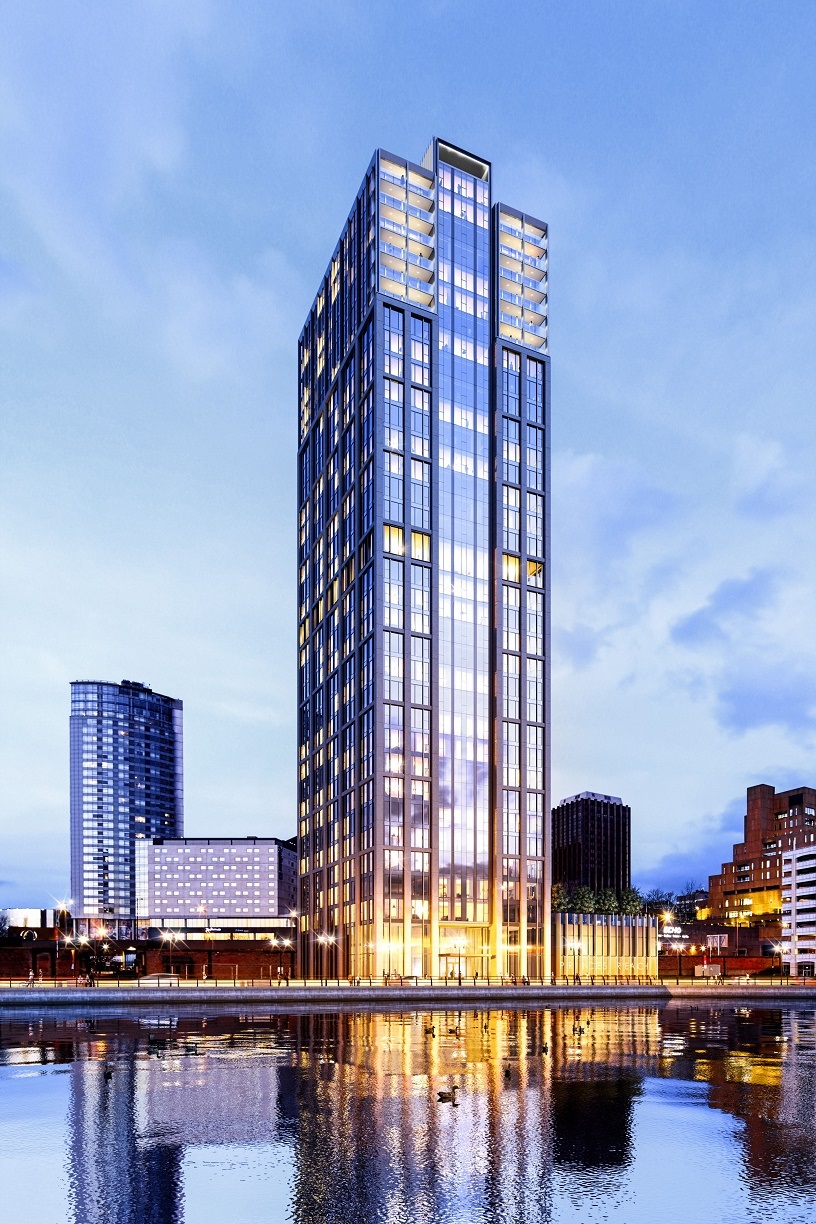
Developer: Moda Living
Architect: Falconer Chester Hall
Description: The £80m, 35-storey tower will be the tallest residential development on Princes Dock. Alongside 325 private rented sector apartments, the building will include 15,000 sq ft of amenity space, roof terrace, and a gym. It is being funded by Moda in a joint venture with Apache Capital Partners.
Planning history: The project’s original planning application was approved in September 2016. A planning amendment was lodged in July this year to add an extra storey to the building, increasing it from 34 to 35 storeys, and to increase the number of flats from 304 to 325.
The mix of apartments – primarily led by one and two-bed apartments – largely remains the same.
Construction: Yet to begin. Despite rumours that Carillion had been appointed on the scheme, a contractor and start date are yet to be confirmed by Moda Living.
Block 5, The Quarter
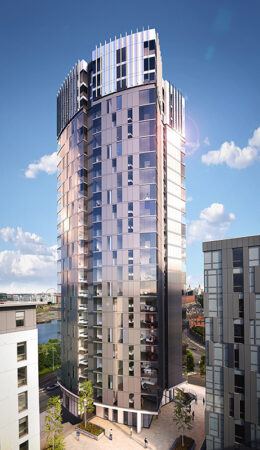
Developer: X1 and Vermont Construction
Architect: Falconer Chester Hall
Description: The £27m tower on Sefton Street will deliver 196 apartments across 25 floors, alongside public realm and amenity space. It forms part of X1’s The Quarter development which has already delivered the £11m, 101-unit The Terrace.
Planning history: Plans were granted for the project in September 2016, at the same planning committee meeting as The Lexington.
Construction: Vermont Construction started on site in November last year, and is due to complete the project in late 2018. North West firms including Heyrod and HE Simm are also working on the project.
Unite Students, Skelhorn Street

Developer: UNITE
Architect: Falconer Chester Hall
Description: The £55m development on a cleared brownfield site opposite Liverpool Lime Street station will contain 1,085 student beds across two blocks of 21 and 19 storeys. There will be retail space at ground floor level.
Planning history: Plans for the project approved in October 2016.
Construction: Main contractor McAleer & Rushe started on the project in April 2017 and is due to complete in July 2019 in time for the 2019-20 academic year. Caldwell Consulting is the M&E contractor with Meinhardt Group as structural engineer.
Hive City Dock
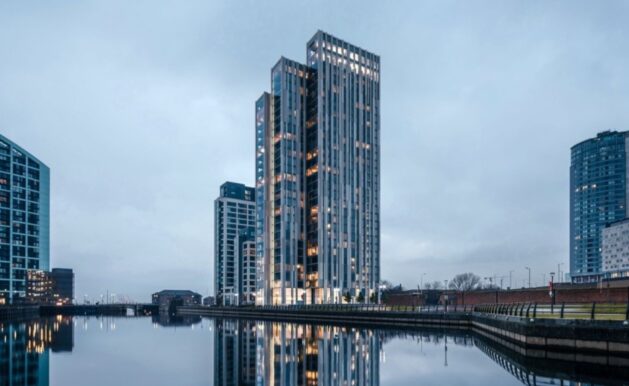
Developer: Your Housing Group
Architect: Brock Carmichael
Description: The 31-storey building is next door to Moda’s Lexington and Peel’s Plaza 1821. The £55m tower will include 278 apartments delivered through YHG’s Hive brand, as well as a rooftop restaurant.
Planning history: Plans were submitted in February 2017, and approved in August, at the same planning committee meeting as Peel’s Plaza 1821.
Construction: At the time of its planning submission, YHG said it planned to have the project on site by the end of 2017, with completion pencilled in for 2020. However, there has been no update on the scheme’s start date and a main contractor is yet to be confirmed. Arup is attached as planner for the project.
Plaza 1821
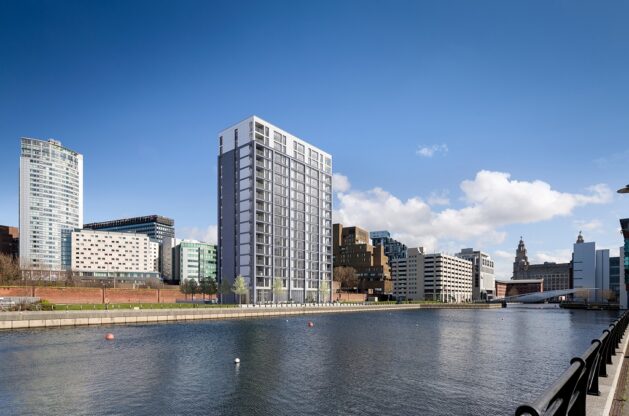
Developer: Peel
Architect: Hodder + Partners
Description: The 15-storey Plaza 1821 will be Peel’s first venture into the PRS market. The £21m tower housing 105 flats and retail space on the ground floor will be bought by Regenda and managed by its subsidiary Redwing Living once complete.
Planning history: Peel lodged plans for the project in April this year; these were approved by the city’s planning committee in August.
Construction: Yet to begin, but Forrest is close to being named as main contractor, with a start date expected before the end of the year.
Infinity
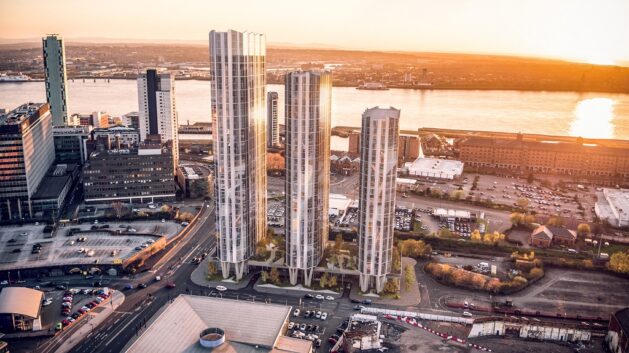
Developer: Elliot Group
Architect: Falconer Chester Hall
Description: The development of three towers ranging between 39, 33 and 27 storeys sits on the corner of Leeds Street and Pall Mall. Valued at £250m, the scheme will provide 1,002 apartments, a luxury spa, gym, and pool, and more than 10,000 sq ft of commercial space.
Planning history: An application was submitted in December 2016 and approved in April this year.
Construction: At the time of planning approval, the developer said the project would start on site in autumn 2017, with completion in autumn 2019. There is no confirmed start date and a contractor is yet to be appointed, however Elliot has a growing relationship with Forrest, which is on site with the developer’s largest schemes in Manchester and Liverpool.
Ovatus
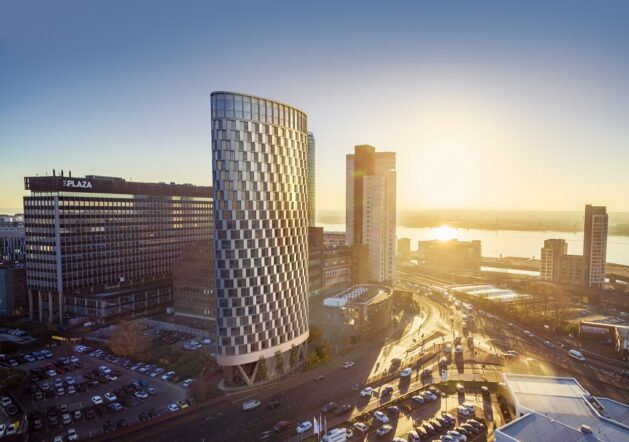
Developer: Prospect Capital and Wilcocks & Wilcocks
Architect: Hodder + Partners
Description: A 27-storey tower on the site of a former car park on Old Hall Street, including 14 three-bed apartments, 88 two-bed apartments, 22 one-bed apartments and 44 studio flats, providing 169 homes in total. It is the first phase of a two-tower project, with its sister tower, Ovatus II, planned to rise to 50 storeys to be Liverpool’s tallest tower. No planning application has been submitted for the second tower to date, and planning documents for Ovatus I suggest its sister tower would not start on site until 2020 at the earliest.
Planning history: Plans were submitted in December 2016 approved in April 2017 at the same planning committee as Elliot Group’s Infinity.
Construction: The developers said at the time of planning approval they planned to start on site in April 2017, but no contractor has been appointed on the scheme, nor is there a revised start date for the project.




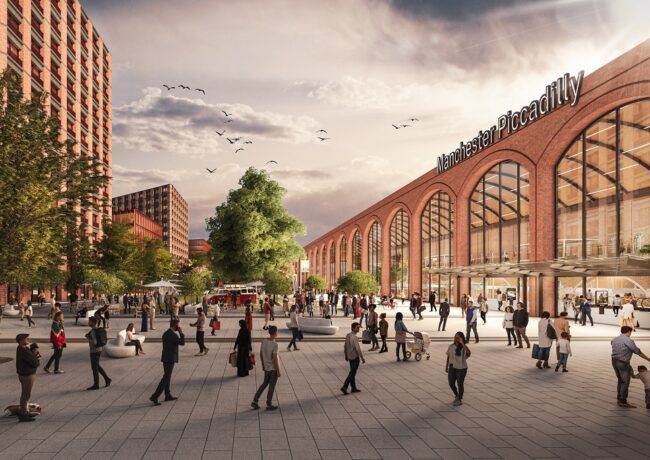
The lack of economic development in the city under the present council is now showing.
Even if some of these do get built, what difference does it make to the city now? It’s just a race to the bottom of value engineering and buildings sliced up into as many pods as possible that can be flogged to uninformed BTL investors.
People need access to much more than just hotel and bar work, and being a commutable distance to Manchester doesn’t in itself make Liverpool attractive as a place to live.
The city needs big change at the top.
By Mike
Absolutely agree with Mike. We need to change the jobs market in Liverpool. I can’t count how many times I’ve heard ex-students say they wanted to stay in the city but had to move away for jobs in the private sector.
It’s a much harder challenge to tackle than granting mindless schemes that will detract from the cityscape and provide average accommodation for a transient population with no vested interest in the community…
By North Westerner
Mike, it seems to me you have a lot of good ideas as to how to improve Liverpool and its region. I feel your efforts posting on here are wasted, however. Why don’t you tackle these issues head on with the people in charge?
By Anonymous
yes
By yes